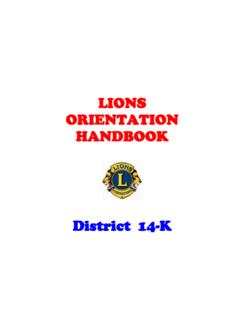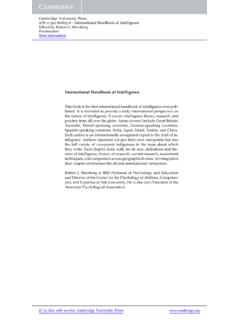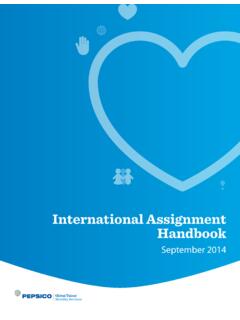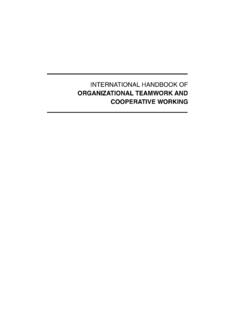Transcription of International Handbook of Threat Assessment
1 BOOKS AND MEDIAI nternational Handbook ofThreat AssessmentEdited by J. Reid Meloy and Jens Hoffman., New York:Oxford University Press, 2014. 496 pp. $ the 2012 school shooting in Newtown, Con-necticut, to the 2015 terrorist attack in San Ber-nardino, we have been repeatedly shocked by acts ofmass killing. After each tragedy, we ask key ques-tions: why did this happen? Were there warningsigns? How can we mitigate the risk of another trag-edy? Although many mass killings cannot be pre-vented, all too often there were warning signs that theperpetrator was on a path to violence.
2 In our hyper-connected society of e-mails, text messages, and so-cial media, those on the road to violence often broad-cast their roadmap for thousands to see. This text is atimely review of the state of the science of threatassessment. The authors quote the mass shooter, An-ders Breivik, who wrote in his manifesto, The timefor dialogue is over (p 1377). This quotation pro-vides an apt metaphor for the core lessons in the prediction of mass shootings is impossible,the methods laid out in this book can help us assesswhen someone poses a Threat and when the time fordialogue may be ending.
3 The book, which is simul-taneously broad in scope and richly detailed, is aresource that should easily earn a place on text is divided into three sections: Founda-tions, Fields of Practice, and Operations. Each chap-ter includes case examples and concludes with a bul-leted list of key concepts. It elegantly proceeds fromconcepts to specific procedures for Assessment andintervention. Because of its broad scope, in my viewthis book is primarily for reference. I found the textfascinating to read in its entirety but realize that otherbusy clinicians may not read through the more spe-cialized areas, such as the chapter on computer mod-els for assessing threatening communications.
4 Thisvolume serves as an excellent starting point for re-searching different areas of Threat Assessment . Eachchapter is thoroughly referenced, providing thereader with access to even more detailed first section, Foundations, should be requiredreading in every forensic fellowship program. It be-gins by contrasting violence risk Assessment withthreat Assessment . Although both focus on prevent-ing violent acts, there are important differences. Vi-olence risk assessments are usually based on popula-tion data and focus on determining and reducing thelikelihood of violence by a specific person, such as adefendant convicted of domestic violence, and theyare generally conducted by clinicians providing con-sultation to legal decision makers.
5 A Threat assess-ment, on the other hand, refers to case-specific dataand focuses on protecting a specific victim. Theseassessments are often conducted in an operationalsetting by law enforcement agencies, such as the Fed-eral Bureau of Investigation or Secret Service, andthey are dynamic, in that they continually evaluatethe danger to a specific target. Subsequent chaptersin the first section include discussions of warningbehaviors, data collection in Threat assessments, andlegal the second section, Fields of Practice, the au-thors discuss the process of Threat Assessment in dif-ferent settings.
6 Each type of Threat has unique char-acteristics and requires a different approach. Forexample, a unique risk factor for intimate-partnerfemicide is proprietariness, when the potential per-petrator feels that he has or should have control overthe emerging topic of electronic Threat assessmentis also examined. The authors discuss studies aboutthe characteristics of e-mail and social media threats ,as well as characteristics of threateners who approachtheir targets. Also reviewed are methods for assessingthreats that involve workplace violence, public fig-ures, school shootings, terrorists, and authors use the Operations section of thebook to discuss practical aspects of how Threat - Assessment teams function in different settings.
7 Di-verse programs including the Los Angeles Police De-partment (LAPD) Threat Management Unit, theFixated Threat Assessment Centre in the UnitedKingdom, and Threat Assessment at universities inGermany and Switzerland are described. Adminis-trators and policy makers interested in developingthreat Assessment teams will find this section provides several multidisciplinary models that canserve as roadmaps for new programs. It describes howthese teams screen referrals, investigate threats , andintervene to protect potential targets. A diverse arrayof operations is reviewed, including preventing284 The Journal of the American Academy of Psychiatry and the Lawschool and university shootings, preventing honorkillings, and combatting International terrorism.
8 Ifound Prosecutor Rachel Solov s chapter, An Oper-ational Approach to Prosecuting Stalking Cases (Chapter 23), particularly enlightening. She dis-cussed her approach to recognizing stalking behav-iors, interacting with victims, sentencing perpetra-tors, and protecting know that I will reread several of the chapters inthis book. The information can guide clinical assess-ments, future research, and public policy. The au-thors summarize this complex topic in a manner thatis clear, concise, and highly accessible to the busyclinician. Whether you are interested in assessing therisk posed by terroristic threats , stalking, or intimate-partner violence, this book is an invaluable Soliman, MDHinckley, OHDisclosures of financial or other potential conflicts of interest: and Psychiatry:Problems, Intersections, andNew PerspectivesBy Daniel D.
9 Mosely and Gary J. Gala. New York:Routledge, 2016. 304 pp. $145. At the end of the day, it s all about food and sex, writes David Rubinow inPhilosophy and Psychiatry(p 262). In case you are wondering, his chapter isabout the roles of genetic predisposition and the en-docrine system in mood disorders. Like the other 20contributions to this book, a product of the Philo-sophical Issues in Psychiatry Research Group at theUniversity of North Carolina at Chapel Hill, Rubi-now s chapter is one of a pair, which seems appropri-ate. If Rubinow is right about what it s all about, it islikely to be more fun with a couple of exceptions, one of each of thepaired chapters is written by a clinician and the otherby a philosopher.
10 The arguments of Rubinow, a psy-chiatry department Chair, are juxtaposed with thoseof Valerie Hardcastle, a philosopher who points tothe effects of disparities in service provision on thehealth of those who live in poor them, the 10 pairs of chapters cover some bigquestions. How are mental illnesses different fromother illnesses? How does mental illness affect therelationship between free will and moral responsibil-ity? How and when is the coercion of the patients ofmental health services justified? What does it mean tobe human?I have an interest in classification and was drawnto the description of scrupulosity (p 164), whichtwo philosophers, Jesse Summers and WalterSinnott-Armstrong, regard as a variant of obsessive-compulsive disorder.









